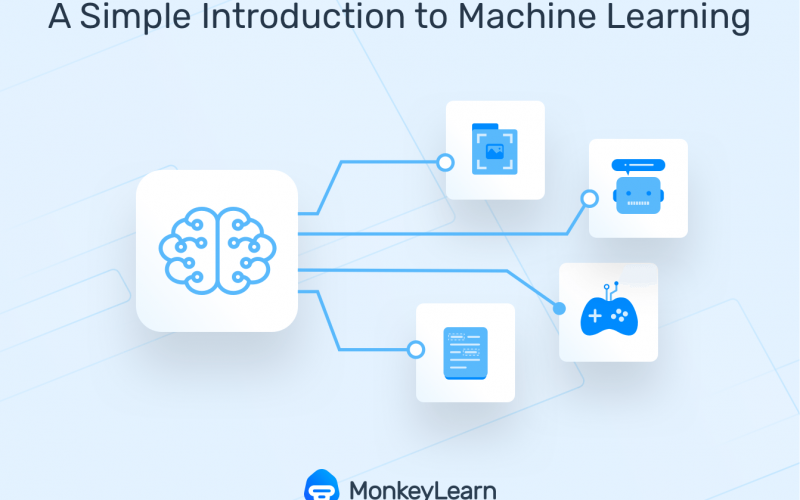Machine learning is a field of artificial intelligence that focuses on developing algorithms and models that enable computers to learn from data and make predictions or decisions without being explicitly programmed. It involves training machines to recognize patterns, extract meaningful insights, and generalize from data to solve complex problems. Here’s an introduction to some key concepts and algorithms in machine learning:
- Supervised Learning:
Supervised learning is a type of machine learning where the algorithm learns from labeled training data. The training data consists of input features and corresponding output labels or target values. The goal is to learn a mapping function that can predict the output labels for new, unseen input data. Popular supervised learning algorithms include:
- Linear Regression: Linear regression models the relationship between input features and continuous target values by fitting a linear equation.
- Logistic Regression: Logistic regression is used for binary classification problems, where the goal is to predict one of two possible classes.
- Decision Trees: Decision trees use a hierarchical structure of nodes and branches to make a series of decisions based on input features.
- Support Vector Machines (SVM): SVM finds a hyperplane in a high-dimensional space that separates different classes with the maximum margin.
- Unsupervised Learning:
Unsupervised learning involves learning from unlabeled data, where the algorithm aims to discover patterns, structures, or relationships within the data without explicit guidance. Unsupervised learning algorithms include:
- Clustering: Clustering algorithms group similar data points together based on their inherent similarities or distances. K-means and hierarchical clustering are common clustering techniques.
- Dimensionality Reduction: Dimensionality reduction techniques reduce the dimensionality of the data while preserving its important characteristics. Principal Component Analysis (PCA) and t-SNE are widely used dimensionality reduction methods.
- Association Rule Learning: Association rule learning identifies patterns or relationships between variables in large datasets. Apriori and FP-Growth algorithms are commonly used for association rule mining.
- Reinforcement Learning:
Reinforcement learning is a learning paradigm where an agent learns to make decisions in an environment to maximize a cumulative reward signal. The agent learns through trial and error, exploring different actions and observing the rewards or penalties associated with those actions. Key components of reinforcement learning include states, actions, rewards, and a policy that guides decision-making. - Neural Networks and Deep Learning:
Neural networks are computational models inspired by the structure and functioning of the human brain. They consist of interconnected nodes or artificial neurons organized into layers. Deep learning is a subfield of machine learning that focuses on training deep neural networks with multiple hidden layers. Deep learning has achieved remarkable success in various domains, including computer vision, natural language processing, and speech recognition.
- Convolutional Neural Networks (CNN): CNNs are widely used in image and video analysis tasks, leveraging their ability to automatically learn hierarchical representations directly from pixel data.
- Recurrent Neural Networks (RNN): RNNs are designed to process sequential data by maintaining memory of previous inputs, making them suitable for tasks involving time series or sequential data.
- Long Short-Term Memory (LSTM): LSTM is a type of RNN that addresses the vanishing gradient problem and can effectively capture long-term dependencies in sequential data.
- Model Evaluation and Validation:
To assess the performance and effectiveness of machine learning models, it is essential to evaluate and validate them using appropriate metrics and techniques. Common evaluation methods include splitting data into training and testing sets, cross-validation, and metrics such as accuracy, precision, recall, F1 score, and area under the curve (AUC).
These are just a few key concepts and algorithms in machine learning. The field of machine learning is vast and continuously evolving, with numerous other algorithms and techniques available for various problem domains. It’s important to choose the most appropriate algorithms based on the nature of the problem, the available data, and the desired outcomes.
